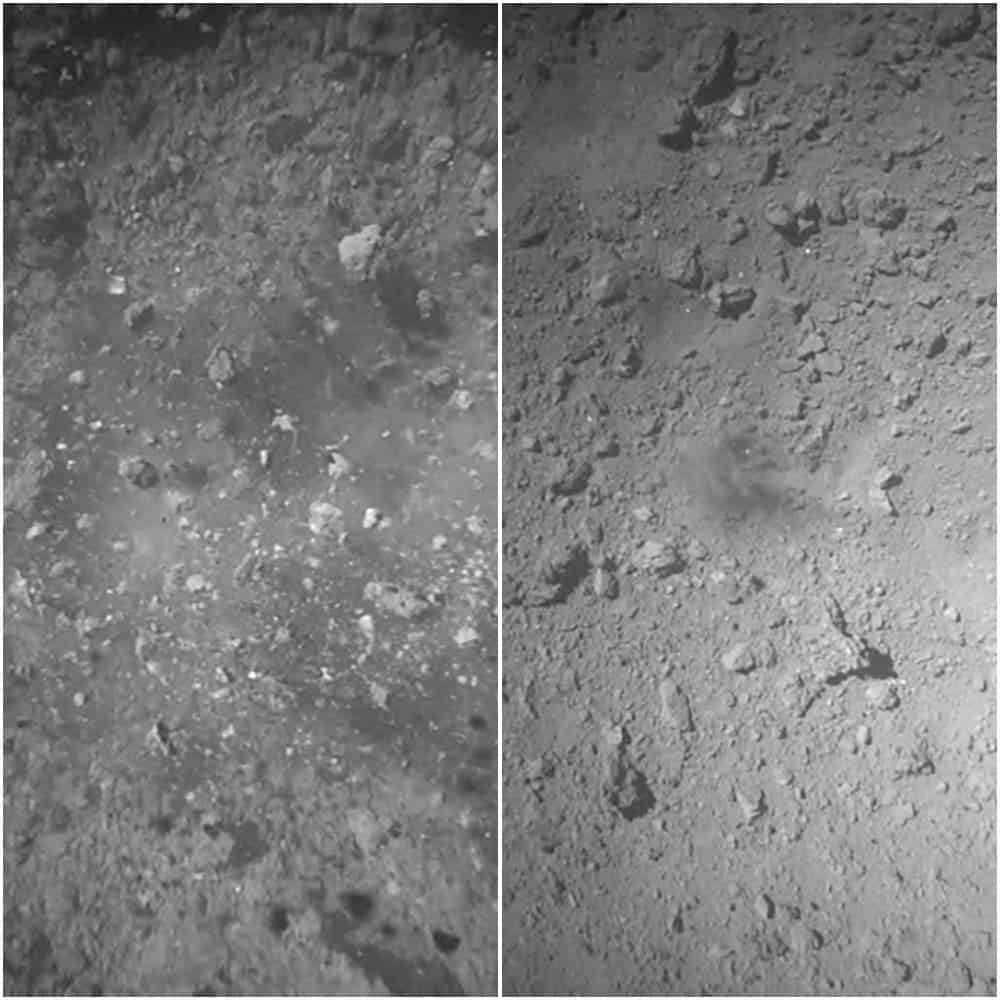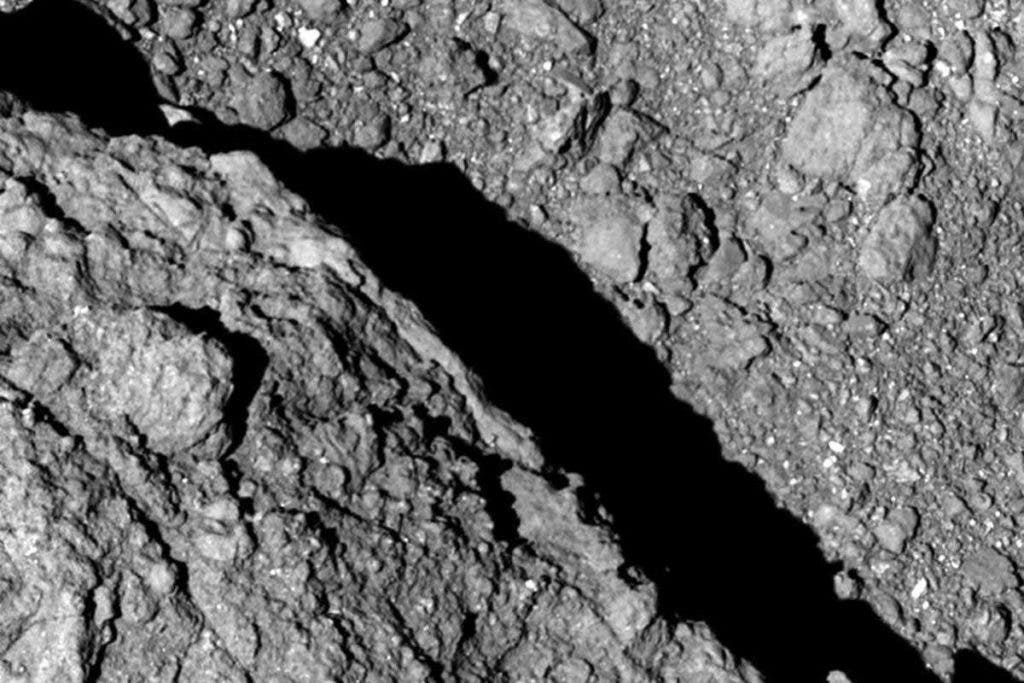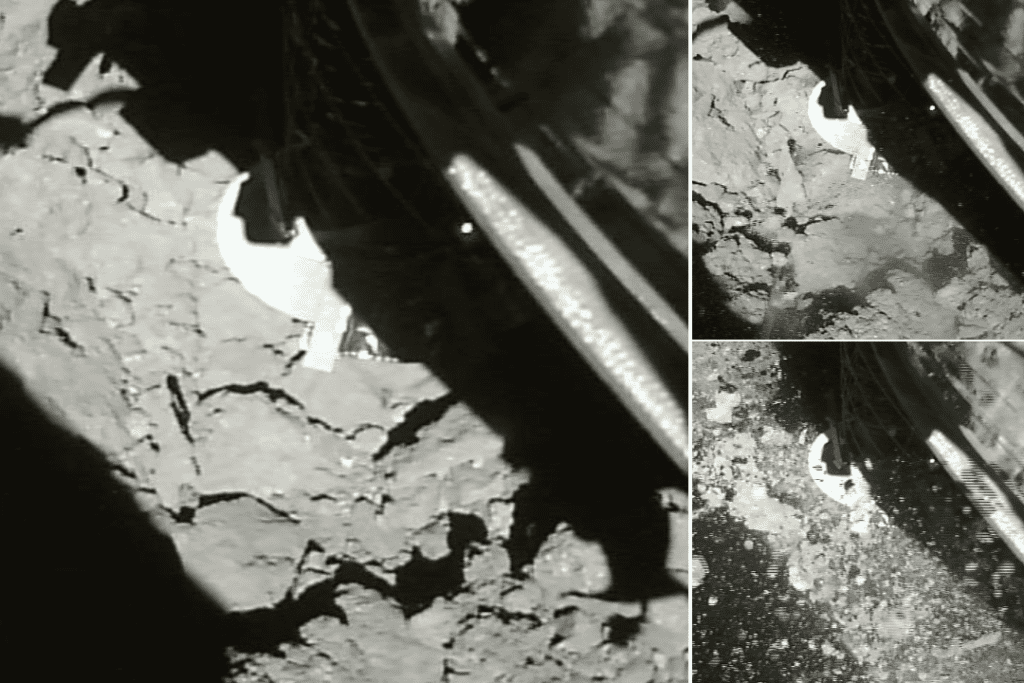A Japanese spacecraft has successfully landed on an asteroid. It’s only the second time in history that such a feat has been achieved, the previous success also belonging to the Japanese space agency. Now, the fridge-sized Hayabusa-2 probe is expected to extract samples from the asteroid and bring them back for research.
The atmosphere was tense at the Japan Aerospace Exploration Agency (Jaxa). Members were observing the landing from a control room when they hear
“The touchdown is successful,” Jaxa spokesman Takayuki Tomobe said, prompting hugs, hurrays, and plenty of “V” victory signs.
The probe first reached the Ryugu asteroid in June 2018, carrying out observations and measurements for months. Because there is virtually no friction in space, the surface of the asteroid isn’t smooth — it’s very rough, and landing on it requires precise calculations.
In April, Hayabusa shot the asteroid with a copper plate projectile, in order to loosen the rocks and expose the material under the surface, making it easier to harvest valuable samples. Last night, the probe Hayabusa-2 latched onto Ryugu, landing in the designated area successfully. The photos are simply stunning.

The photos are also a mythical reference, as Ryugu translates to “Dragon Palace” in Japanese and refers to a castle at the bottom of the ocean in an ancient Japanese tale. In the story, the fisherman Urashima Tarō travels to the palace on the back of a turtle and returns with a mysterious box — an analogy to how Hayabusa will return with samples from the asteroid. Image credits: Jaxa.
“First photo was taken at 10:06:32 JST (on-board time) and you can see the gravel flying upwards. Second shot was at 10:08:53 where the darker region near the centre is due to touchdown,” JAXA tweeted.
“These images were taken before and after touchdown by the small monitor camera (CAM-H). The first is 4 seconds before touchdown, the second is at touchdown itself and the third is 4 seconds after touchdown. In the third image, you can see the amount of rocks that rise,” JAXA tweeted.
This is the second touchdown on the asteroid, after earlier this year, two small rovers landed on the Ryugu asteroid. The Hayabusa2 mission includes four rovers with various scientific instruments.
After it touched down, Hayabusa-2 collected a new set of samples and left Ryugu’s surface. If everything goes according to plan (and so far, it has) it will begin the 5.5 million-mile (9 million-kilometer) journey home towards the end of this year.
Subsurface material (such as the one blasted by Hayabusa) is particularly intriguing for scientists, because it has been protected from the harsh effects of cosmic rays and solar wind. By better studying and understanding these asteroids, researchers want to shed more light on the evolution of the solar system











